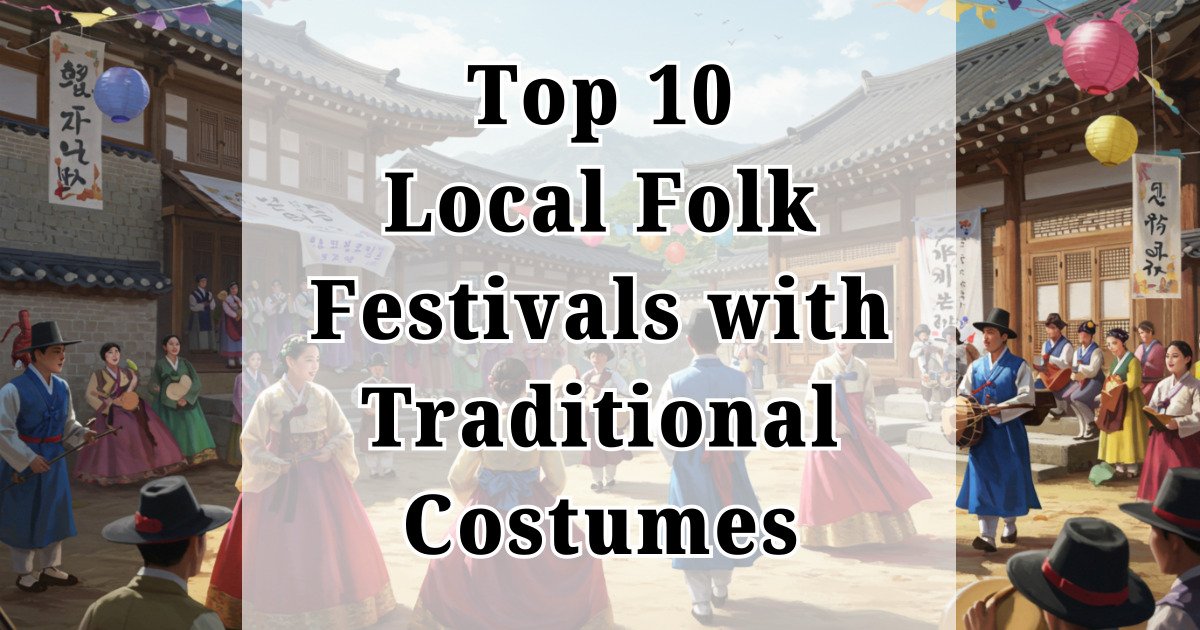Are you ready to dive into a colorful world of tradition, culture, and heritage? Discovering local folk festivals with traditional costume is one of the most immersive and rewarding ways to experience the soul of a region. From vibrant parades to age-old rituals, these events showcase the beauty and diversity of human culture like nothing else.
In this guide, we’ll explore 10 unforgettable local folk festivals. around the world that proudly celebrate traditional costumes. Whether you’re a cultural traveler, photographer, or just someone who loves folklore, these festivals promise a one-of-a-kind experience.
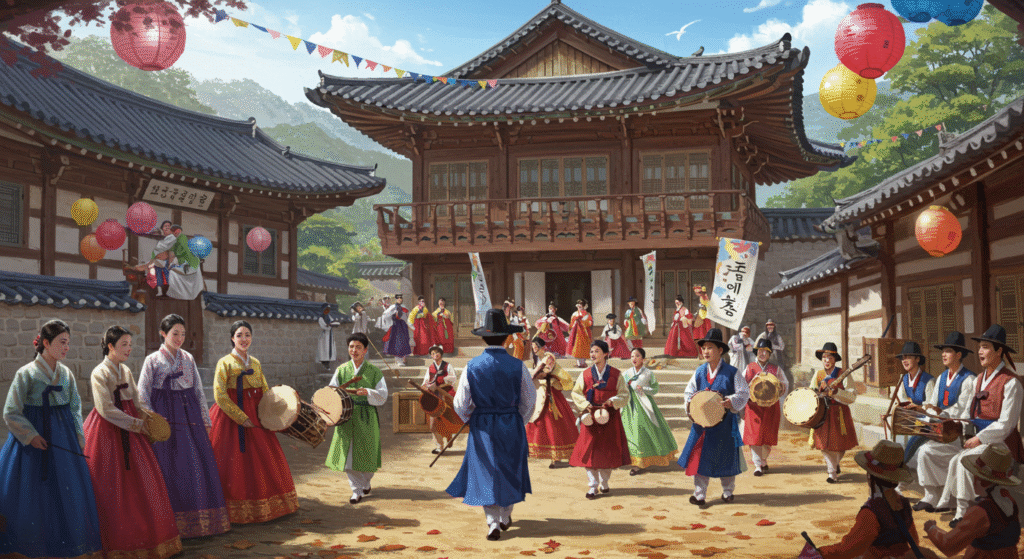
❓ Why Local Folk Festivals with Traditional Costumes Matter
Local folk festivals are more than just fun events—they are living history. They preserve and pass down stories, values, and identities through performance, song, and especially costume. Traditional costumes often reflect centuries of regional history, craftsmanship, and social symbolism.
Participating or witnessing these festivals allows travelers to:
- Connect with local communities.
- Understand historical and cultural contexts.
- Capture visually stunning moments.
- Support cultural preservation.
And the best part? These festivals happen in both popular and off-the-beaten-path destinations.
1. Gion Matsuri – Kyoto, Japan
One of the most iconic and elegant traditional festivals in Asia, Gion Matsuri takes place every July in Kyoto. Dating back over a thousand years, this UNESCO-celebrated event includes:
- Grand processions of floats (yamaboko junko)
- Traditional yukata and kimono worn by participants and visitors
- Ancient music and theatrical performances
What makes it stand out? The elaborate craftsmanship of both floats and costumes that reflect Heian-era traditions. If you’re seeking authentic local folk festivals with traditional costumes, Gion Matsuri is a must.
2. Carnival of Binche – Belgium
Recognized by UNESCO as a Masterpiece of Oral and Intangible Heritage of Humanity, the Carnival of Binche is one of Europe’s oldest and most peculiar folk festivals. Held annually in the days leading up to Lent, the highlight is the appearance of the Gilles—men dressed in vibrant, centuries-old costumes with:
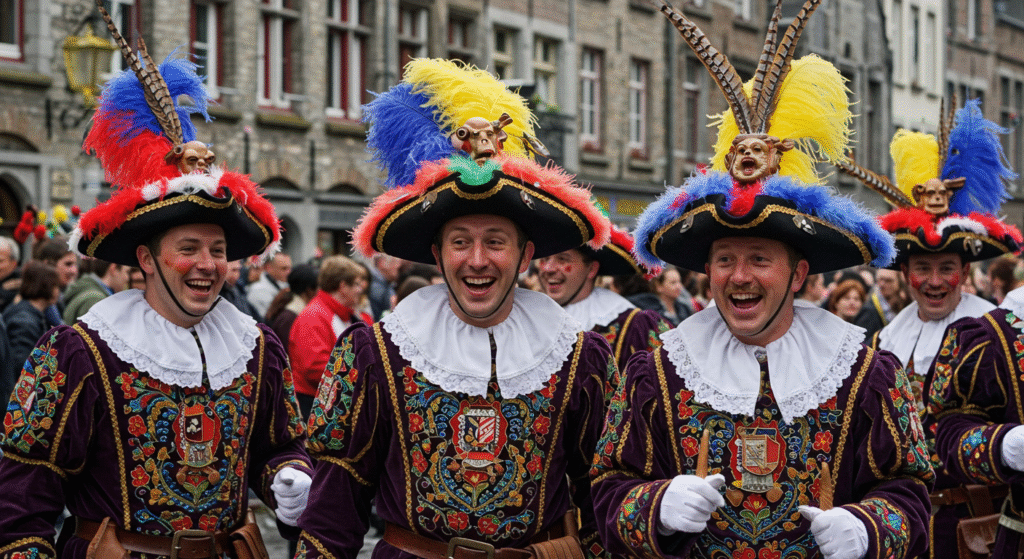
- Wax masks
- Ostrich feather hats
- Wooden clogs and bells
The traditional orange-throwing ritual and rhythmic dances create a mesmerizing scene. Binche offers a magical dive into a time capsule of folk tradition.
3. Naadam Festival – Mongolia
Held every July in Mongolia, Naadam is a national celebration of the “Three Manly Games”: wrestling, horse racing, and archery. But what adds to the visual spectacle are the traditional Mongolian deels—long, flowing robes with rich embroidery worn by participants and attendees.
Naadam isn’t just about sports; it’s a celebration of nomadic heritage, traditional arts, and costume. The opening ceremony alone, with parades of riders and musicians in full traditional attire, is worth the trip.
4. Sinulog Festival – Cebu, Philippines
Held every January, Sinulog Festival is one of the Philippines’ largest cultural events. While it’s a religious festival honoring the Santo Niño, it has evolved into a grand celebration of dance and identity.
What makes Sinulog ideal for those exploring local folk festivals with traditional costumes is:
- Tribal and ethnic-themed costumes in vivid colors
- Street dances representing historical battles and blessings
- Mix of indigenous and Spanish influences in design
It’s a visual feast and an expression of Filipino pride.
5. Fasnacht – Basel, Switzerland
Basel’s Fasnacht, held every February or March, is a unique blend of satire, music, and tradition. This 3-day carnival begins at 4 AM with a lantern-lit parade called Morgestraich.

Participants wear elaborate Larven (masks) and hand-crafted costumes that often carry political or cultural commentary. Each costume and musical group, or “clique,” has its own theme, often kept secret until the parade.
Fasnacht is not your typical Swiss event—it’s bold, loud, colorful, and incredibly meaningful to the locals.
6. Jidai Matsuri – Kyoto, Japan
Another Kyoto gem, Jidai Matsuri (Festival of the Ages), is held in October and features over 2,000 participants dressed in authentic costumes representing every era of Japanese history—from samurai and nobles to farmers and monks.
Unlike Gion Matsuri’s spiritual roots, Jidai Matsuri is a historical reenactment brought to life with meticulous attention to detail. For fans of costume and history, this is a goldmine.
7. Kukeri Festival – Bulgaria
The Kukeri Festival, held in various Bulgarian villages during winter, is an ancient ritual meant to ward off evil spirits and ensure good harvests. What makes this one stand out?
- Men dress in monstrous masks and shaggy fur costumes.
- Bells are attached to their belts to create a cacophony.
- Ritual dances are performed to chase away negativity.
It’s an unforgettable mix of fright and folklore—perfect for those who love local folk festivals with traditional costumes that are raw and primal.
📸 Tips for Attending Folk Festivals
If you’re planning to explore folk festivals around the world, here are some helpful travel tips:
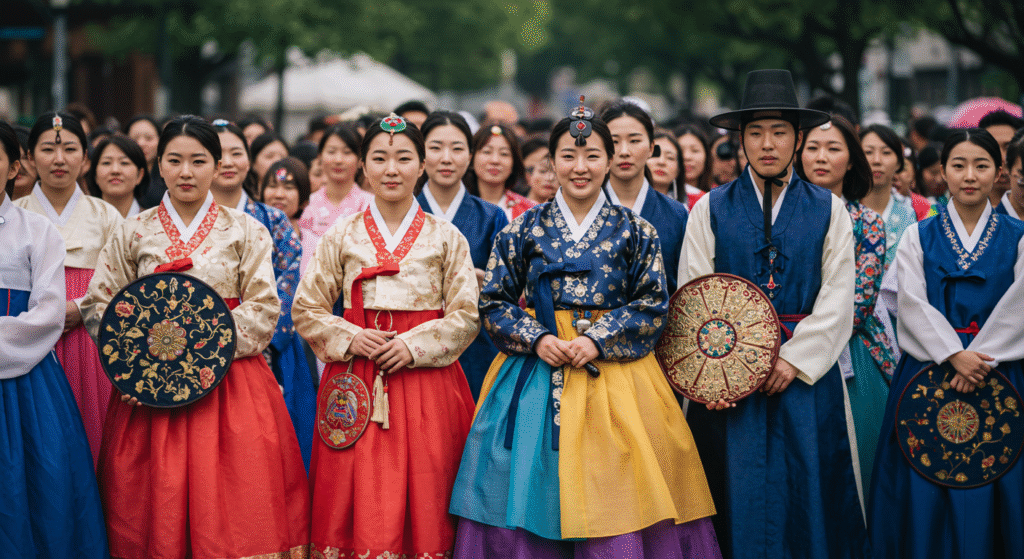
- Respect local customs: Always ask before taking photos.
- Dress appropriately: Some festivals may have clothing requirements.
- Plan early: Accommodation can fill up fast during festival season.
- Learn some local phrases: This helps build connection with locals.
- Stay curious: Ask about the history behind costumes and dances.
🌍 Hidden Gems: Lesser-Known Folk Festivals with Rich Costumes
While many famous festivals draw global crowds, some of the most magical moments can be found at lesser-known local folk festivals with traditional costumes tucked away in small towns and rural areas. These hidden gems are perfect for travelers who crave authenticity, cultural intimacy, and unique storytelling.
8. Surva Festival – Pernik, Bulgaria
Bulgaria makes another appearance on this list for a good reason. The Surva Festival, held in Pernik, is one of Europe’s largest masquerade events. Surva celebrates Kukeri traditions, where people dress as beast-like spirits with:
- Oversized fur costumes
- Horned masks
- Giant cowbells
Participants dance and march through the streets, producing rhythmic sounds to chase away evil spirits. This event not only preserves tradition but actively involves younger generations in costume-making and performance.
9. Fiesta de la Virgen de la Candelaria – Puno, Peru
Held every February in Puno, this festival is a vibrant mix of Catholic and Andean traditions. The highlight? Over 40,000 dancers and musicians parade through the streets in stunningly colorful outfits.
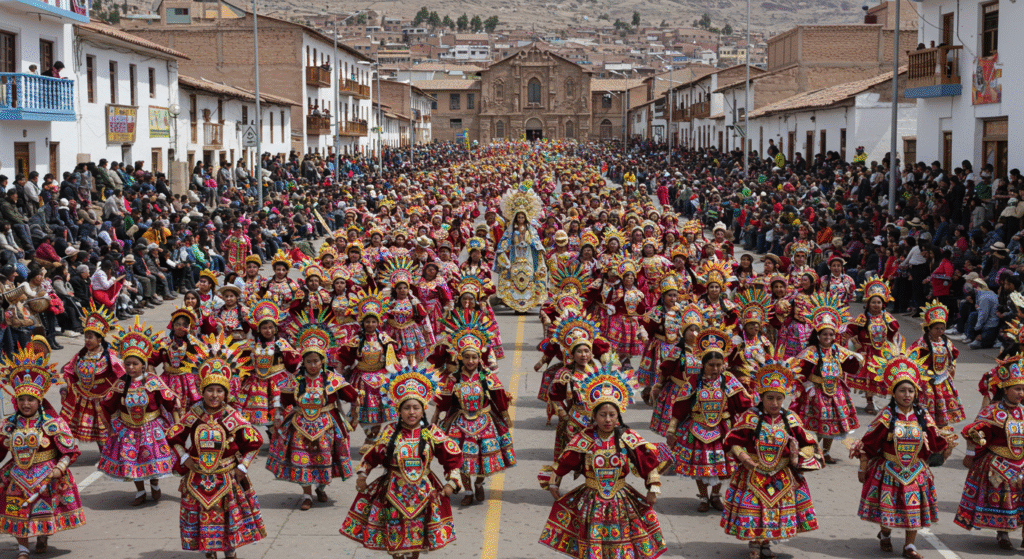
Traditional costumes include:
- Polleras (layered skirts with embroidery)
- Feathered headdresses
- Beaded capes and sashes
With its blend of faith, folklore, and costume, Candelaria is one of South America’s most spectacular expressions of indigenous identity and pride.
10. Wodaabe Gerewol Festival – Niger
Looking for a truly unique cultural experience? The Wodaabe Gerewol Festival in Niger is an annual courtship ritual where men wear makeup, beads, and elaborate costumes to attract potential brides.
Key features:
- Face painting with red ochre and white markings
- Bright garments with embroidery
- Traditional dances judged by women
The festival highlights gender roles, beauty standards, and tribal tradition, making it a profound example of how traditional costumes carry deep cultural meanings.
🎭 The Deeper Meaning Behind Traditional Costumes
Costumes are not just decorative—they’re deeply symbolic. Each thread, pattern, or color can signify:
- Status or role within a community
- Spiritual beliefs or mythological figures
- Connection to nature, ancestry, or agricultural cycles
By wearing these garments during local folk festivals, communities engage in cultural storytelling, binding the past to the present.
Examples:
- The kimono’s design in Japan can reflect seasonal changes and philosophical meaning.
- The Sami gákti in Northern Europe signals region and family identity through color combinations and stitching patterns.
- The Zapatista attire in Mexican indigenous festivals often incorporates political symbolism alongside traditional patterns.
📊 How Folk Festivals Boost Local Economies
Another benefit of preserving local folk festivals with traditional costumes is their positive economic impact on small communities.
| Benefit | Description |
|---|---|
| Cultural tourism | Visitors spend on lodging, food, and experiences |
| Craftsmanship | Revival of textile, embroidery, and costume-making |
| Youth engagement | Encourages new generations to learn traditional arts |
| Global exposure | Many small festivals gain international attention through social media |
Supporting these festivals means supporting sustainable tourism and cultural resilience.
💡 How to Find Folk Festivals Around the World
Want to plan your next trip around a traditional festival? Here’s how:
- Use official tourism boards: Most countries list cultural calendars online.
- Follow cultural blogs and influencers: Many focus on folk travel or costume heritage.
- Search by region + “folk festival”: For example, “Andalusia folk festival traditional dress.”
- Visit museums and cultural centers: Often, they promote upcoming festivals and events.
Don’t forget to check local Facebook groups or Reddit travel communities for real-time tips!
📚 Recommended Resources
If you’re interested in learning more about traditional costumes and folk culture, check out:
- 📘 Folk Costumes of the World by Robert Harrold
- 📙 Traditional Festivals: A Multicultural Encyclopedia by Christian Roy
- 🧵 Online collections from the V&A Museum, Smithsonian, and UNESCO archives
These resources dive deeper into the design, history, and symbolism of traditional clothing from all over the world.
Online collections website:
UNESCO archive: https://www.unesco.org/en/tags/archives
V&A Museum: https://www.vam.ac.uk/
Smithsonian: https://www.si.edu/
✅ Final Thoughts
Attending local folk festivals with traditional costumes isn’t just about sightseeing—it’s a deep, emotional experience that connects you with the roots of culture and community. From the grandeur of Kyoto to the mysticism of Bulgarian villages, these festivals let you step into stories that are still being told today.
🎯 Conclusion: Why You Should Experience a Local Folk Festival
Traveling to local folk festivals with traditional costumes isn’t just about sightseeing-it’s about participating in the living heartbeat of culture. These events preserve languages, honor ancestors, and build bridges between past and future.
You’ll walk away with:
- Deeper understanding of local values
- Once-in-a-lifetime photo opportunities
- Friendships and stories that go beyond borders
Whether it’s the mystique of Bulgaria’s Kukeri, the color of Peru’s Candelaria, or the elegance of Japan’s Jidai Matsuri, one thing is certain: traditional costumes bring heritage to life.
So, what are waiting for? Start planning your next culturally immersive journey and experiences the world through the threads of tradition.
If you want to read more post about Local Folk Festivals:
Must See 10 Hidden Local Folk Festivals
Local Folk Festivals Worth Visiting: 8 Unforgettable Cultural Celebrations
Top 10 Local Folk Festivals in Asia That Will Blow Your Mind
